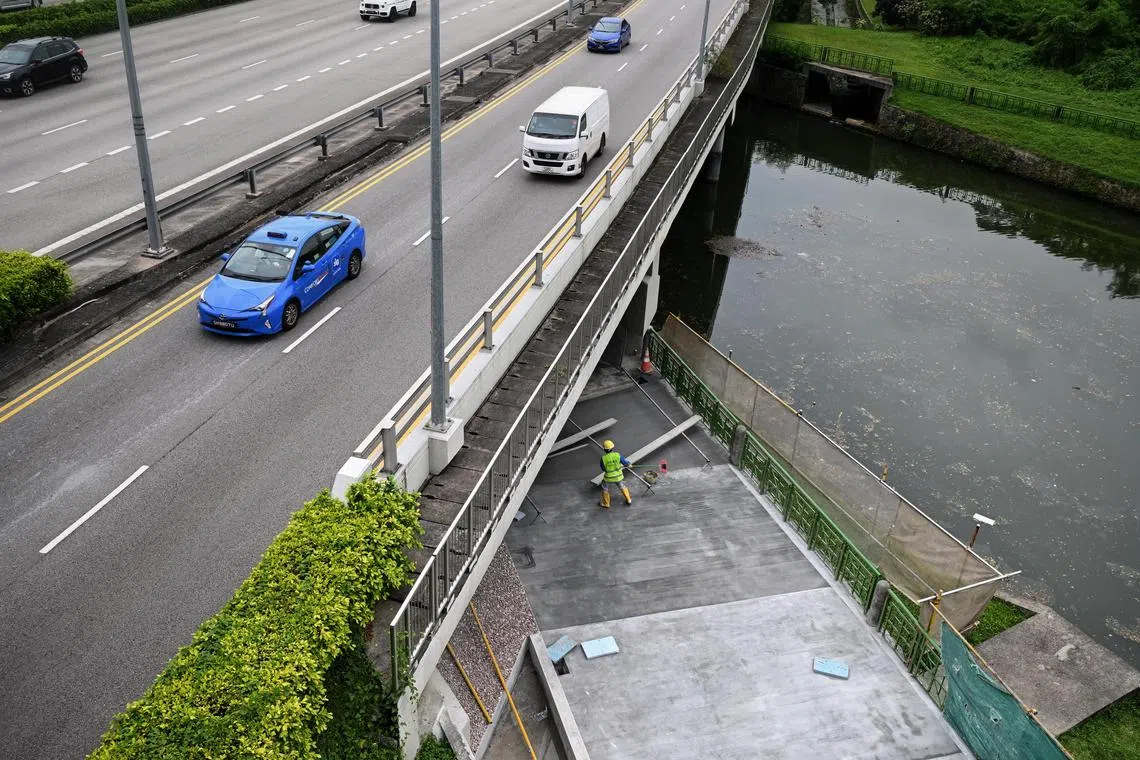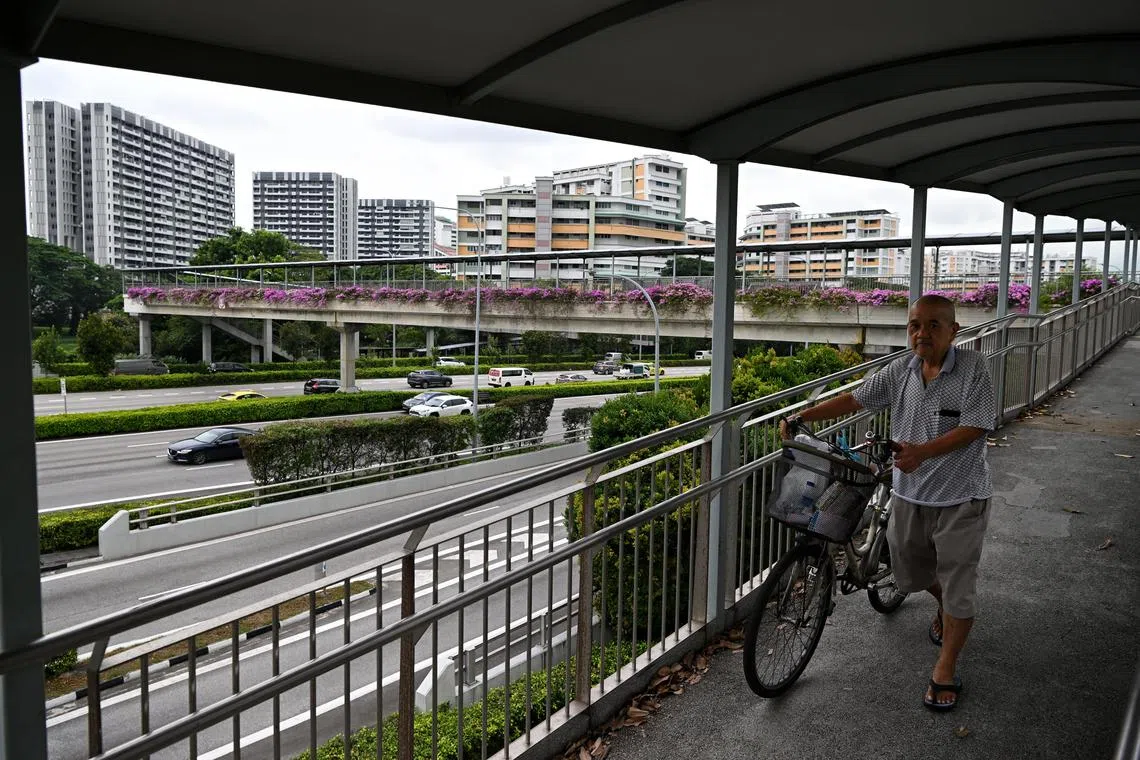Bishan-to-city bike route crossings, underpasses to be ready by year end
Sign up now: Get ST's newsletters delivered to your inbox

Construction work being carried out at the underpass beneath the CTE on the Potong Pasir side, on April 20.
ST PHOTO: KUA CHEE SIONG
Follow topic:
SINGAPORE - New underpasses and road crossings along a cycling route between Bishan-Ang Mo Kio Park and Gardens by the Bay
However, cyclists hoping to ride without interruption from Bishan to the city along Kallang River will have to wait a few more years, as a proposed walking and cycling bridge near Potong Pasir that will span the 16-lane Pan-Island Expressway (PIE) is still at the planning stage.
Mooted by URA eight years ago in 2015, these infrastructural improvements are aimed at turning the Kallang Park Connector into a 10km-long seamless commuting route.
When completed, it is expected to cut the time needed to cycle from Bishan to the Central Business District, from about one to 1½ hours to about 30 to 45 minutes.
Giving an update on the Bishan-to-city route in a letter to The Straits Times Forum published on Friday,
In addition, an underpass at the Central Expressway (CTE) near Toa Payoh Lorong 8 that had low headroom – about 2m – is being deepened and widened, while the Sir Arthur’s Bridge underpass in Geylang is being upgraded.
Mr Teo said the works for these underpasses are more complex due to the need to protect existing structures and prevent disruptions to underground services. That is why these work sites have been cordoned off for public safety.
He said URA is working towards completing the works by the end of 2023, and the underpasses will be opened to the public as soon as regulatory approvals are obtained.
As part of the Bishan-to-city route, street-level crossings
These signalised crossings are expected to be completed by the end of 2023 as well.
Mr Teo was responding to a recent Forum letter
In his letter, Mr Lim lamented the lack of tangible progress made to the Bishan-to-city route and the inconveniences caused by the recent construction works, which have resulted in lengthy detours for cyclists due to the closure of some sections of the Kallang Park Connector.
For instance, due to the closure of the underpass at the CTE, cyclists have to dismount and push their bicycles across an overhead bridge, he said.
In addition, according to Mr Lim, what should be a five-minute ride from Toa Payoh to Boon Keng takes him more than 15 minutes due to the detours and the lack of connectivity.
“It is a huge turn-off for someone who wants to use this cycling route for commutes,” he told ST in an interview.

Cyclists have had to use an overhead bridge to cross the CTE due to the closure of an existing underpass for upgrading works.
ST PHOTO: KUA CHEE SIONG
Mr Lim also noted that the only improvement made to the park connector so far has been a new cycling ramp in Braddell Road that opened in November 2020.
“I feel like 2015 to 2023 is a long enough time to wait,” he added.
While there is some light at the end of the tunnel, a major hold-up to the completion of the Bishan-to-city route is a proposed spiral cycling bridge that will span a section of the PIE near St Andrew’s Junior College.
When built, the bridge will make it more convenient for cyclists and joggers to cross the expressway and the nearby Kallang River, but the URA said in 2020 that more in-depth studies and coordination were needed due to the bridge’s design and the complex nature of carrying out construction over traffic.
These in-depth studies have since been completed, said a URA spokesman in response to queries.
“We are currently developing the plans for the bridge, taking into account findings from the studies, and will share more details when ready,” the spokesman said without elaborating.

Work on the underpasses have proven complex due to the need to protect existing structures and prevent disruptions to underground services, said URA.
ST PHOTO: KUA CHEE SIONG
National University of Singapore associate professor Raymond Ong, who researches transport infrastructure, said the spiral design of the bridge ensures that the gradient of the entry and exit ramps will not be too steep for cyclists.
“The question is how high should the spiral bridge be above the expressway and river. This has an impact on where the entry ramp needs to be, and how steep and how long it is,” he added.
Noting that the area around the bridge is fairly built-up, Prof Ong said this poses additional engineering challenges, and it means that the construction process will need to be carefully considered and planned.
He also flagged potential environmental impacts from the works, especially on water quality.
Due to the complexity and scale of the project, Prof Ong was not able to provide an estimate on how long it might take to build the PIE bridge and complete the Bishan-to-city route.
Similarly, when asked, URA did not provide an expected completion date for when the full, seamless cycling route will be ready.


